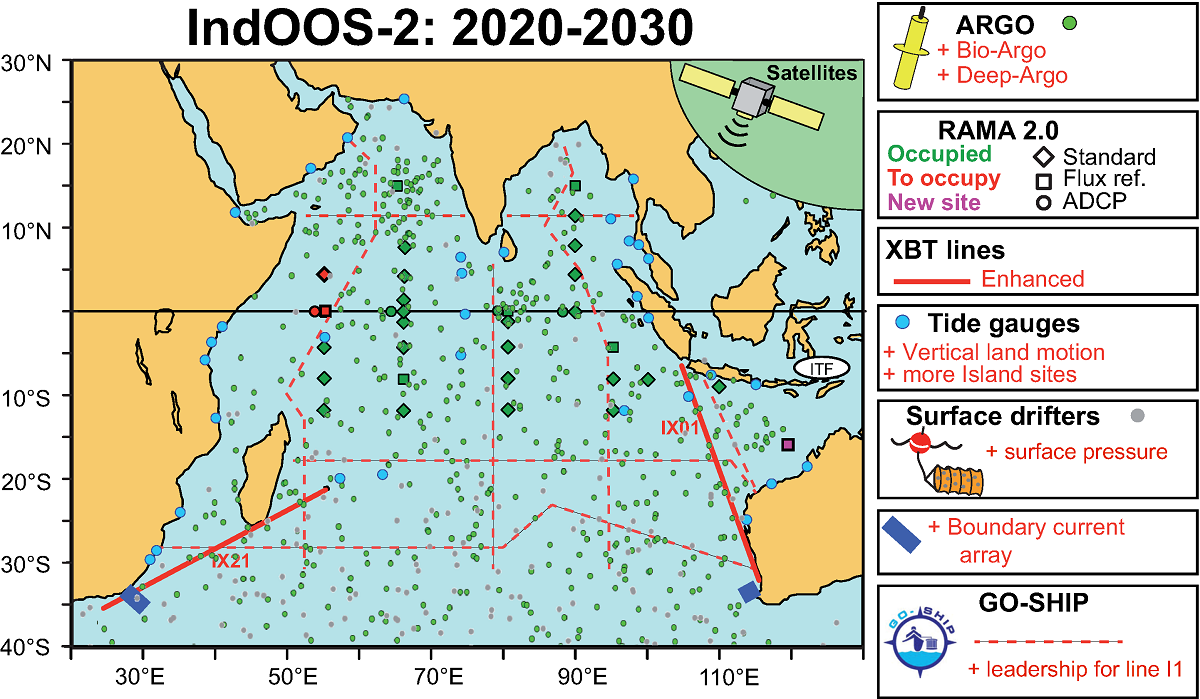Indian Ocean Observing System (IndOOS)

CLIVAR, in collaboration with IOGOOS and the Intergovernmental Oceanographic Commission, is working to design and implement an integrated observing system for the Indian Ocean, including a basin-wide mooring array, a 3°x3° array of Argo floats, a 5°x5° array of surface drifters, an enhanced XBT network as well as many other measurements (e.g., process studies, tide gauges and satellites). In order to help review, coordinate and plan the implementation process, the idea of the IndOOS webpages are to bring together information on past, ongoing and planned observational activities in the Indian Ocean.
If you are carrying out (or planning to carry out) observational projects/cruises of relevance to the Indian Ocean, please email Agus Santoso (agus.santoso@clivar.org), including the following information:
- Project/cruise details, including port/date of departure
- Location and parameters measured
- Contact person (including e-mail address)
- Data availability (i.e. where the data will be stored and accessibility)
- Additional information (e.g. brief summary, webpage, possible collaborations etc.)
During 2017-2019, a group of 60 international scientists, led by the CLIVAR/IOC-GOOS Indian Ocean Region Panel (IORP) in collaboration with the IMBeR/IOGOOS Sustained Indian Ocean Biogeochemistry and Ecosystem Research (SIBER) panel, have conducted a Review of the Indian Ocean Observing System (IndOOS) (see IndOOS Review (2006-2016) ) under the scrutiny of an independent Review Board appointed by various partners of the Global Ocean Observing System (GOOS) programme.
During the process, the authors reviewed the current status of the IndOOS, including its past successes and failures, articulated the scientific and operational drivers of IndOOS and their societal impacts, and identified the Essential Ocean Variables (EOVs) that can address these drivers, as well as their geographical coverage and spatio-temporal resolution.
The outcome of the review is a roadmap for a future IndOOS - IndOOS-2 - that can address the urgent need for ocean and climate observations in the face of accelerating change. The roadmap includes 136 actionable recommendations, prioritized into three Tiers: I - high priority - maintain and consolidate essential capacities, while considering the practicalities of implementation; II - desirable - extend IndOOS capacities to better address scientific and operational drivers; and III - lower priority - pilot projects to investigate efficacy, sustainability, and potential for integration into the IndOOS.
For more information of the IndOOS Review, please visit: http://www.clivar.org/indoos-decadal-review-2006-2016
To download the report, please refer to below links:













